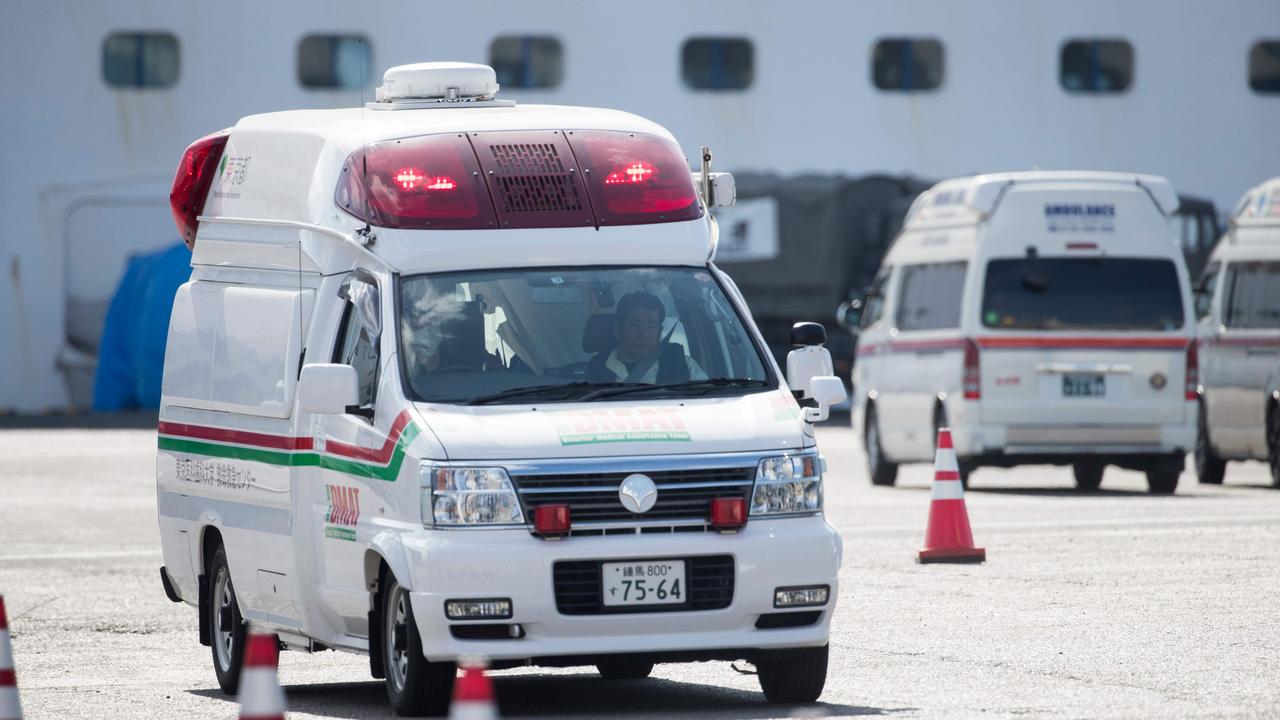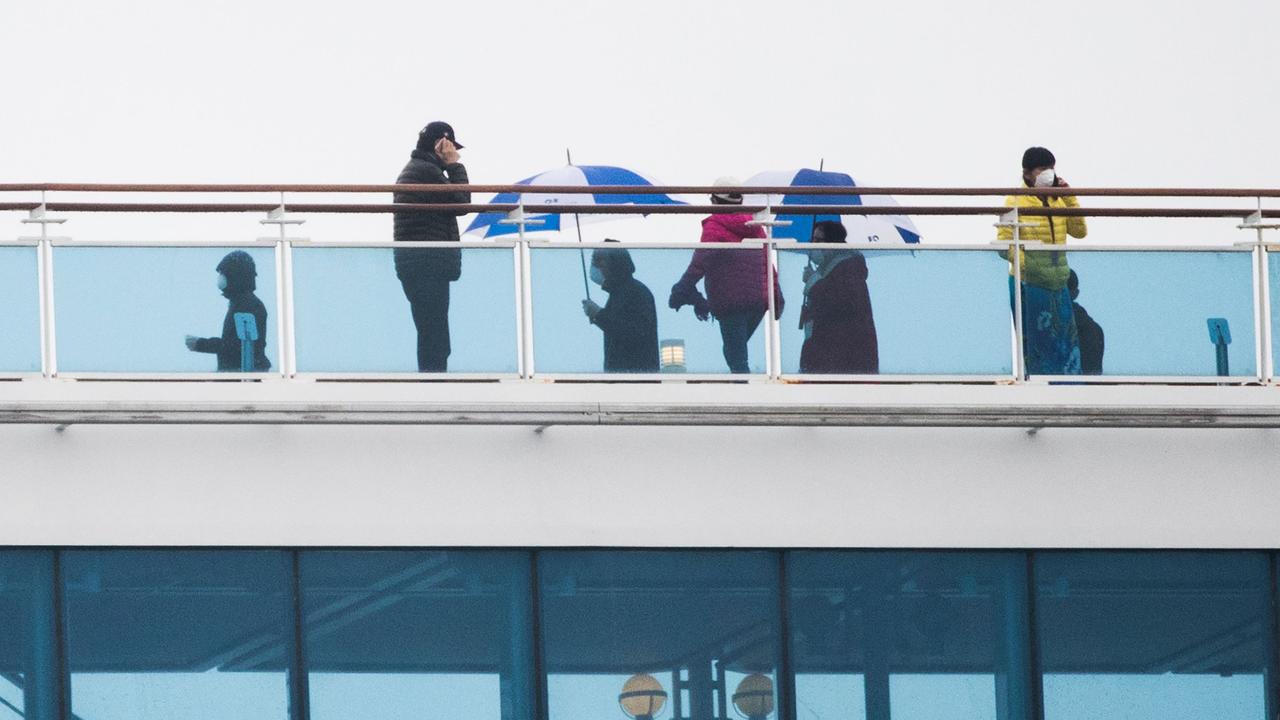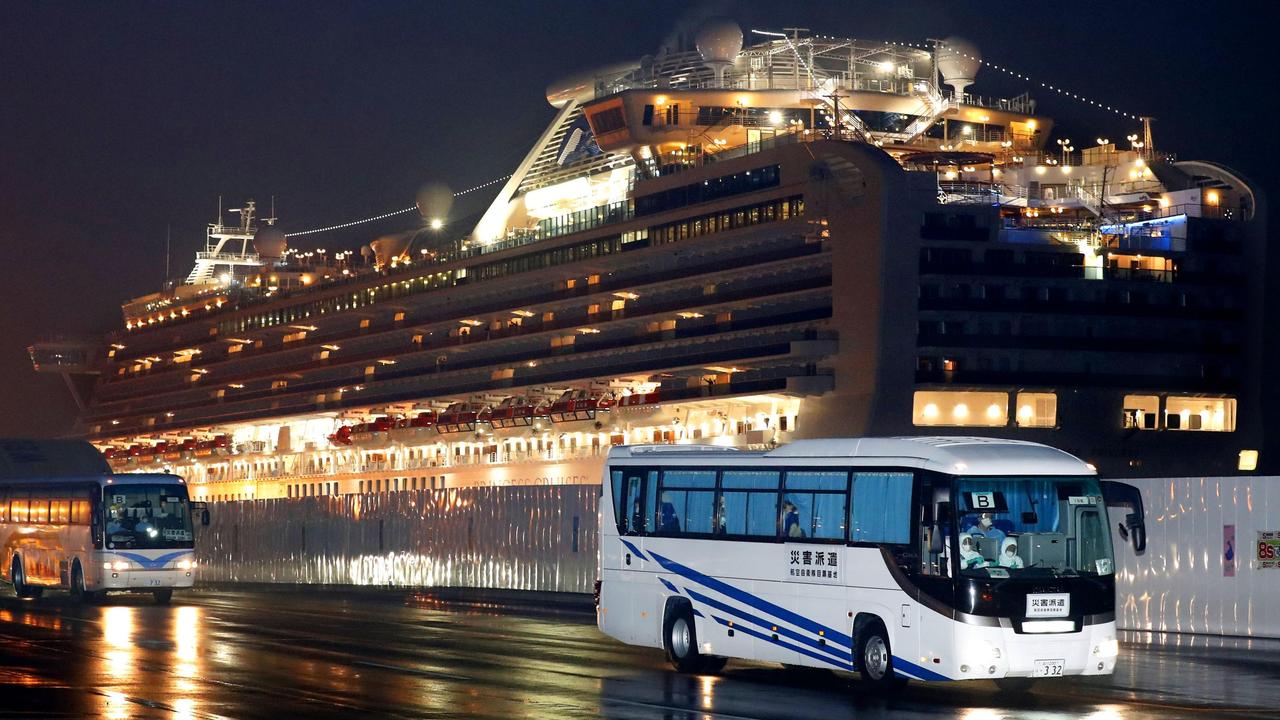‘I could die from this cruise’: Big problem with cruise ship quarantine
As coronavirus strikes another 99 people on the locked-down Diamond Princess, experts are warning of a terrible, avoidable mistake.
Outside of China, where the coronavirus epidemic first took hold, the biggest cluster of cases has been on a luxury cruise ship bobbing in limbo off the coast of Japan.
The Diamond Princess, with more than 3700 people on-board, has been in quarantine at the port of Yokohama for nearly two weeks.
The mighty ship sailed into the port of Yokohama on February 4 after a cruise around Southeast Asia under somewhat of a dark cloud: It had just emerged a previous passenger, who had left the ship at Hong Kong, had since tested positive for the dreaded coronavirus.
RELATED: Follow our coronavirus updates
The ship was put in immediate lockdown at Yokohama, near Tokyo, and health screening of passengers and crew began.
Ten people were confirmed to also have coronavirus. More tests were ordered. More cases were detected.
The on-board virus tally continued to climb: 20 cases, then 174, then 218, then 355.
As each new case was rushed from the ship to a medical centre in Japan, those still on-board waited – either for the oppressive two-week quarantine to end or for the virus to find them.
The New York Timesdescribed the Diamond Princess as “a floating, mini version of Wuhan”.

Just last night, another 99 people were confirmed to have caught coronavirus nearly a fortnight after quarantine began. That brought the ship’s virus tally to 454, with 16 Australians among them.
A 14-day quarantine was ordered for the Diamond Princess to stem the spread of coronavirus. But experts now say that may have been a mistake.
“There is now ample evidence that this (quarantine) is not preventing the spread of cases within the ship and it is also posing a risk of spread within the ship,” infectious disease expert Tom Inglesby told TIME.
He said authorities got it wrong by keeping people on the ship after they had tested negative for coronavirus when they should have been put in quarantine somewhere else to lower their risk of infection.
Harvard University professor Michael Mina, who specialises in epidemiology and immunology, went so far as to question the ethics of the quarantine plan.
“The decision to keep the passengers and crew on the ship is no longer ethical and is wholly inappropriate,” he said.
“Clearly this has transmitted among them, placing all at unacceptable risk.”

Microbiologist Dr Anne Gatignol from McGill University in Montreal agreed the quarantine plan probably backfired.
“From a virologist’s perspective, a cruise ship with a large number of persons on-board is more an incubator for viruses rather than a good place for quarantine,” Dr Gatignol told the Montreal Gazette.
“Several other viral infections on cruise ships have been reported in recent years. They were mainly norovirus infections giving gastroenteritis and they affected many people on each ship. “Although the mode of transmission is different, I tend to believe that the number of infections will increase unless more and more people are disembarked, either on Japanese soil or repatriated.”
Masahiro Kami, the head of Japan’s non-profit group Medical Governance Research Institute, agreed people who tested negative should have been released from the ship.
“Since the infections began in an enclosed space, if this continues, (the number of patients) will steadily increase,” Dr Kami said.
“One minor error and I think a person (on-board) can become infected.”

John B Lynch, an associate professor of infectious diseases at the University of Washington, said quarantining the ship and keeping people cooped up together – particularly the crew, who didn’t have their own cabins – “increases the likelihood of transmission”.
But he added: “We have to remember that quarantines protect those outside the quarantine, not those within.”
Little is known about how coronavirus spreads. Information from the US Centres for Disease Control, which Princess Cruises has distributed to Diamond Princess passengers, recommends they stay in their rooms as much as possible, keep a distance of about 180cm from each person, cough and sneeze into tissues and wash hands regularly and thoroughly.
Passengers have spoken of “floating prison”-like conditions under the strict rules of quarantine.
Those in interior cabins without windows have been permitted short visits to the ship’s decks if they agreed to wear specific face masks.
Despite attempts to control the spread of germs, it hasn’t been lost on passengers that being stuck on a cruise ship with a coronavirus outbreak isn’t ideal.

“I can’t wrap my head around the fact that I could die from this cruise,” passenger Gay Courter, 75, told The Wall Street Journal.
“I go look outside and there’s people in white hazmat suits.”
Cairns couple Paul and Jacqui Fidrmuc previously told the Today show they were “just kind of sitting tight, really”.
“It’s a little bit daunting,” Ms Fidrmuc said.
“But look, we can’t do anything … We are good strong healthy people and we’ve got good immune systems and fingers crossed that … we can fight it off.”
Cruise ships already have a notorious reputation for the spread of sickness, and there’s truth in that.
“In general, you’ve got passengers and crew members from different parts of the world mixing intimately and intensely for a short period of time,” Professor Sanjaya Senanayake, an infectious diseases specialist at Australian National University, told the BBC.
“They’ve all got varying levels of immunity and so that does set things up for an infection outbreak.”

Dr Senanayake said the coronavirus might be spreading via droplets from infected people, even without direct contact with them.
“Say if someone sneezed on to a table, and then someone else immediately touches that table, that could lead to infection,” he said.
“People might not all be talking to each other, but they are in shared spaces like swimming pools, spas, dining rooms and auditoriums.”
And in confined spaces, one sick person could trigger an on-board outbreak, Tullia Marcolongo from the International Association for Medical Assistance to Travellers told National Geographic.
“It’s the domino effect, and you have nowhere to go,” she said.
The Federal Government will evacuate Australian Diamond Princess passengers on a Qantas flight leaving Japan tomorrow. They’ll be placed under a two-week quarantine in Darwin before being allowed to return home.
The United States has already evacuated its citizens from the ship.




